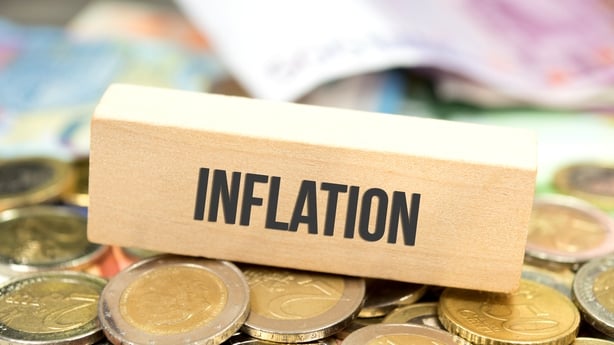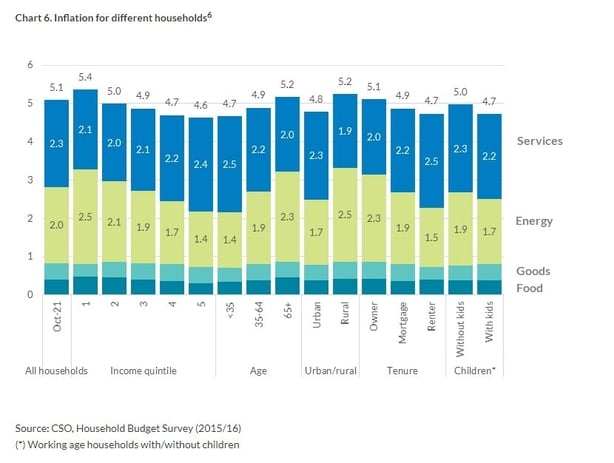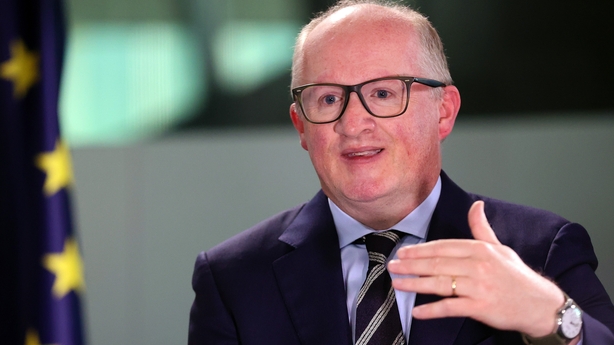Today is the second Tuesday in February.
In the inflation world, that means this is the week some 80 price collectors from the Central Statistics Office will fan out to 84 different locations in towns and cities across the country to gather approximately 51,000 prices across 615 item headings.
Prices are also gathered for utilities and other services through phone calls and internet searches.
It's a big operation for an important number: the monthly Consumer Price Index (CPI) or what is commonly referred to as the rate of inflation.
It is based on the price of a basket of goods and services which is carefully calibrated by the CSO to reflect various aspects of the population. The basket is changed and updated every five years.
For much of the past decade, it trundled along hardly budging some years and actually slipping back slightly in others. Yes, prices actually fell.
In fact, if you go back to this time last year the monthly consumer price index was negative in January and February.
But now, all is changed.
In October, the consumer price index jumped to an annual rate of 5.1%, its highest rate since the boomy days of 2007. In December, it rose further to 5.5%.
We'll know January’s figure when it is published next week. The initial "flash estimate" from Eurostat actually shows the harmonised measure of inflation, which is measured slightly differently to allow for comparisons with other European economies, falling back a bit to 5%.
The chief culprit has been energy prices, which have been running over 27% higher than last year with home heating oil up over 50%.
Energy prices began to climb off the back of increased demand for fossil fuels to generate electricity during an unusually calm autumn last year. Low wind speeds generated less wind-power and more power was generated by burning fossil fuels.
The spike in gas prices, specifically, was exacerbated by tensions over Ukraine.

Add to that "normal" inflation which arose as economies emerged from the pandemic, and factories encountered problems getting their raw materials. These "supply bottlenecks" combined with higher shipping costs and higher oil prices affected prices across a range of goods.
We've seen all that deliver higher prices across the board. Inflation is spreading to everyday items like pasta and bread which are up between 5-6% on an annual basis.
This makes the inflation we’re experiencing particularly acute for those on lower incomes who spend a proportionately higher amount of their incomes on food and energy. In fact, it means they are facing an inflation rate that’s higher than the average rate.
An attempt to measure how inflation varies across different household groups was contained in a recent speech delivered by the Governor of the Central Bank, Gabriel Makhlouf.

In correspondence between Sinn Féin Spokesman on Finance, Pearse Doherty and the CSO, the statistical service said it will examine the feasibility of producing price trend statistics for subgroups of the population like lower income households, pensions and renters when it updates its CPI basket next year.
When Philip Lane, the European Central Bank’s chief economist and former Governor of the Central Bank spoke to RTÉ News last month, he said it would be a mistake to tighten monetary policy now in response to inflation that may prove to be temporary.
He said "...unless we think the inflation pressure is going to remain above 2% in 2023 and 2024, it would be a mistake to tighten policy in response to inflation that’s high right now."

The ECB currently thinks inflation will dip below its target level of 2% next year. It will update its forecast next month. Last week, after its Governing Council meeting, the President of the ECB Christine Lagarde pointedly refused to repeat her previously expressed view that it would be 'highly unlikely’ the Bank would raise rates this year.
This was taken as a signal that the ECB is about to respond more actively to inflation, which would mean eventually raising rates.
We’ll find out in a few weeks’ time.
Where inflation goes from here is a hugely important question for workers negotiating wages, for companies setting prices for their goods and services and for those on fixed incomes who have seen their spending power clobbered.
A package of once-off measures will help those on low incomes. It may soften the galloping impact of inflation. It may even buy some time until inflation begins to subside.
But if we are moving into a world of higher prices, then fasten your seatbelts.
Because the prices that have bounded our economy for years will burst open, with implications for wages, taxes and how people live their lives.






